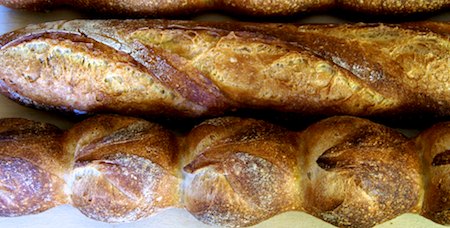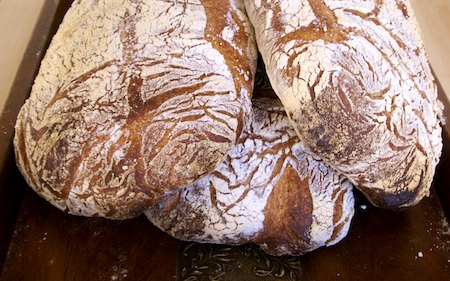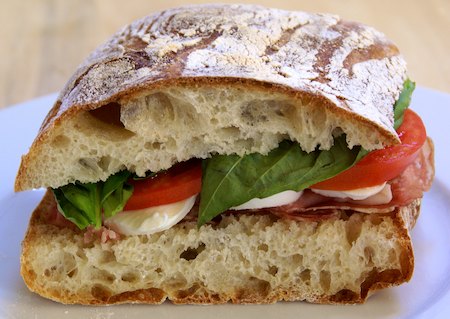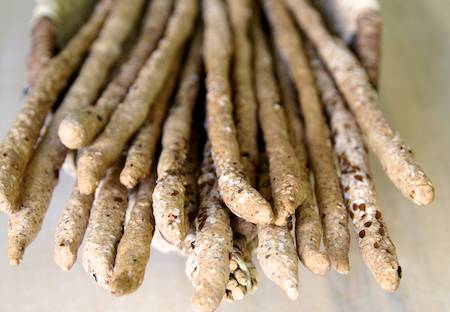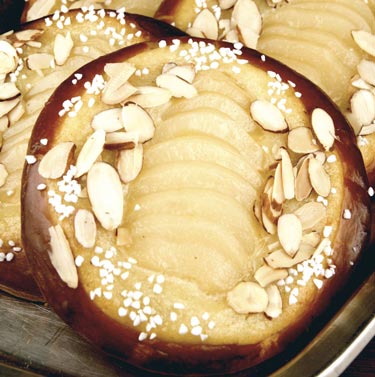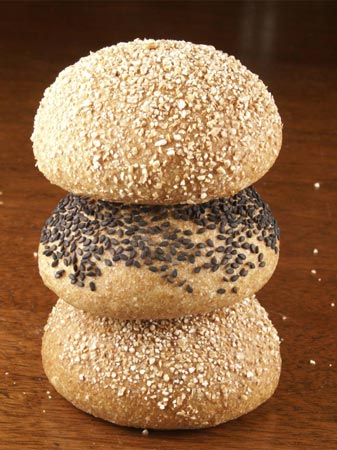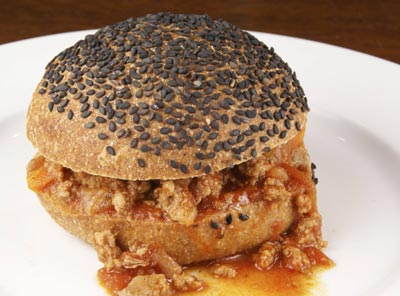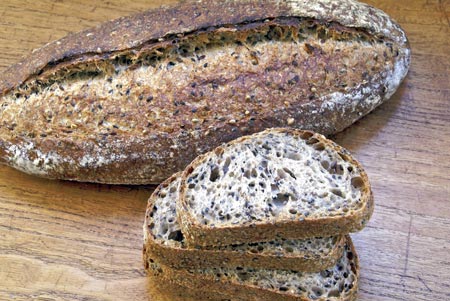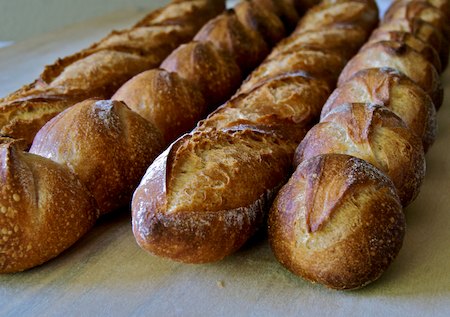
These baguettes were made with a small amount of diastatic malt powder. Perfectly good bread is possible without malt, but in some cases it can help your bread be just that much more lovely.
Malt contains several enzymes; the most significant to bread bakers is amylase, which breaks down the starch in flour into simple sugar. Sugar is important for two primary reasons: it is what yeast eats (so fermentation would not be possible without it) and caramelization of sugar contributes greatly to a rich crust color. Most white flours have malt added at the mill, and even when they do not, both amylase and simple sugars are present naturally in wheat flour, so you can get fine results without adding more malt to the dough at mixing time.
However, when dough has a long fermentation, the yeast consumes a lot of sugar, since it grazes pretty much constantly. This means there is less sugar left over for caramelization of the crust, so the crust color might be paler than you’d like. For doughs with preferments (such as the poolish used in these baguettes), where a portion of the flour is fermented over several hours, the addition of amylase in the form of malt can make the crust a bit nicer. You might also add some to your dough if you are baking with unmalted flour.
